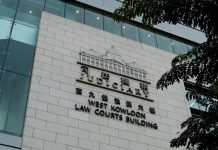
Several questions arise regarding the third plenum’s work. Specifically, did the plenum chart a clear path toward achieving new quality productive forces? [The concept of new quality productive forces refers to the shift toward innovation-driven growth, technological advancement and high-quality development in various sector of the economy—Ed.]Additionally, did the plenum address the structural challenges within China’s economy? What additional announcements were made at the plenum? And, finally, what’s next for China as a result of the third plenum?
Third plenums
Before I tackle each of these questions, a quick note about third plenums. Traditionally, the CPC Central Committee’s third plenum is meant to be a broad blueprint for long-term development, not a quick fix. The third plenum’s communiqué serves as a foundational summary for China’s medium- and long-term development. The detailed policy plans and proposed laws will follow in the coming months.
Invariably, plenums are not designed to provide specific solutions. Rather, they aim to initiate the directions and/or guidelines. This means that the Party’s core leadership is not responsible for the minutiae of policy development and implementation. That is a task best left to Party officials at all levels as well as the relevant national ministries and provincial authorities. The Party leadership’s task is to guide the country into general policy trends based on thorough deliberations within the central committee.
A key task of the recently concluded third plenum was to consider a draft of the Resolution of the Central Committee of the Communist Party of China on Further Deepening Reform Comprehensively to Advance Chinese Modernization, which lays out the Party’s plans to develop the economy during the coming years. Within the context of China’s long history of reform and opening up, the third plenum’s resolution on the draft will likely be viewed as a key event in China’s efforts to continue to develop and improve the socialist system with Chinese characteristics, pursuing a path to comprehensively deepen reforms, and promoting Chinese-style modernization.
Questions answered
So, let’s move on to answering the questions that I previously posed. First, did the plenum chart a clear path toward achieving new quality productive forces? The answer is a resounding yes.
Some Western critics have expressed concerns about the omission of the phrase “decisive role of the market” in the communiqué. Upon review, I believe they overlook the broader context of the Party’s goal of balancing market mechanisms with state involvement. The resolution clearly states “we will see that the market plays the decisive role in resource allocation and that the government better fulfills its role.” A reading of the resolution conveys the Party’s sense of urgency regarding the economy, acknowledging short-term risks and growth goals, and offers plans to accelerate the issuance of special-purpose bonds to support local governments. Additionally, the fiscal reforms aimed at addressing the imbalance between the Central Government and local governments’ fiscal resources and responsibilities are clearly highlighted.
The resolution emphasizes advancing new quality productive forces, noting that China will accelerate efforts to build a high-standard market system, which is a major reform task for the country. Further, efforts will be made to build a unified national market, including the development of a unified urban-rural construction land market, a nationwide integrated technology and data market, and a unified national electricity market. Additionally, China will enact reforms aimed at improving the market system and rules for production factors such as labor, capital, land, knowledge, technology, management and data. Finally, the resolution also recognizes the need for demand-side support, and improvements to the social security network and hukou system, or the country’s household registration system.
The second question I posed centered on the plenum addressing the structural challenges facing China’s economy. Again, the answer is an unequivocal yes.
For those who have doubts, it must be noted that the resolution consists of 15 sections and 60 articles and is divided into three main parts. It is a document that underscores the Party’s substantial efforts at continuing to improve the modernization of China.
The first part of the resolution elaborates on the significance and overall requirements of further comprehensively deepening reform and advancing Chinese-style modernization. The second part discusses how and where China will comprehensively deploy reforms in a variety of areas, with economic system reform as the driving force. The third part discusses strengthening the Party’s leadership over reform and deepening the reform of the Party building system.
The resolution proposes more than 300 important reform measures, all of which involve all levels of the Party and the state. Some of the proposals improve and enhance previous reform measures, while others are new ideas aimed at reforms based on practical needs and pilot explorations. Again, this is a document that carefully addresses China’s commitment to pursuing further reform and opening up.
The third question that I posed regarded additional announcements made at the plenum. While the resolution showed that the Party is as focused on security as on the economy, which is nothing new or unusual in and of itself, it also had a substantial focus on foreign relations, reflecting China’s role as a major global power.
Several important announcements stood out, including the pursuit of the Global Development Initiative, the Global Security Initiative, and the Global Civilizations Initiative, a call for an equal and orderly multipolar world, global governance reform, and universally beneficial and inclusive economic globalization.
And what about the fourth and final question that I posed? What’s next for China as a result of the third plenum? While I’m not always keen on making predictions, the third plenum’s resolution clearly lays out a path for China’s future.
The resolution notes that by 2035, China will have finished building a high-standard socialist market economy in all respects, further improved the system of socialism with Chinese characteristics, generally modernized the system and capacity for governance, and basically realized socialist modernization. And how will it achieve this? If the most frequently mentioned words and phrases in the resolution are any indication of China’s future path, it will mean that the country will have completed the comprehensive reform tasks laid out in the document by the time of the 80th anniversary of the founding of the People’s Republic of China in 2029.
As the resolution states, China is entering a crucial period for building a great nation and achieving national rejuvenation through modernization. In order for the country to basically achieve a high-standard socialist market economy in all respects by 2035 and to build China into a modern socialist country that is prosperous, strong, democratic, culturally advanced, harmonious and beautiful by the centenary of the People’s Republic of China in 2049, the third plenum’s resolution is an important milestone in pursuit of deepening and advancing comprehensive reforms and Chinese modernization. –The Daily Mail-Beijing Review news exchange item




